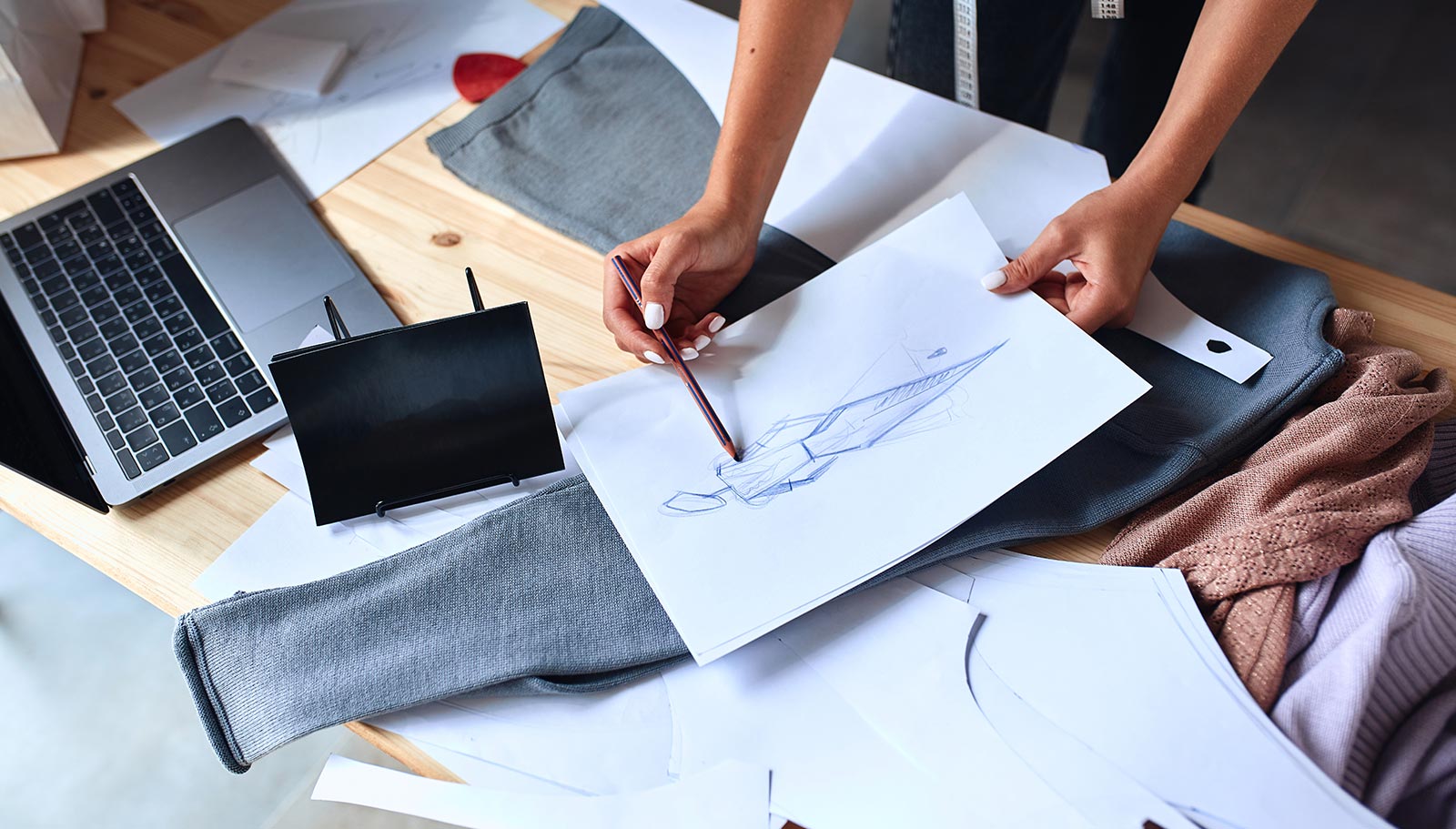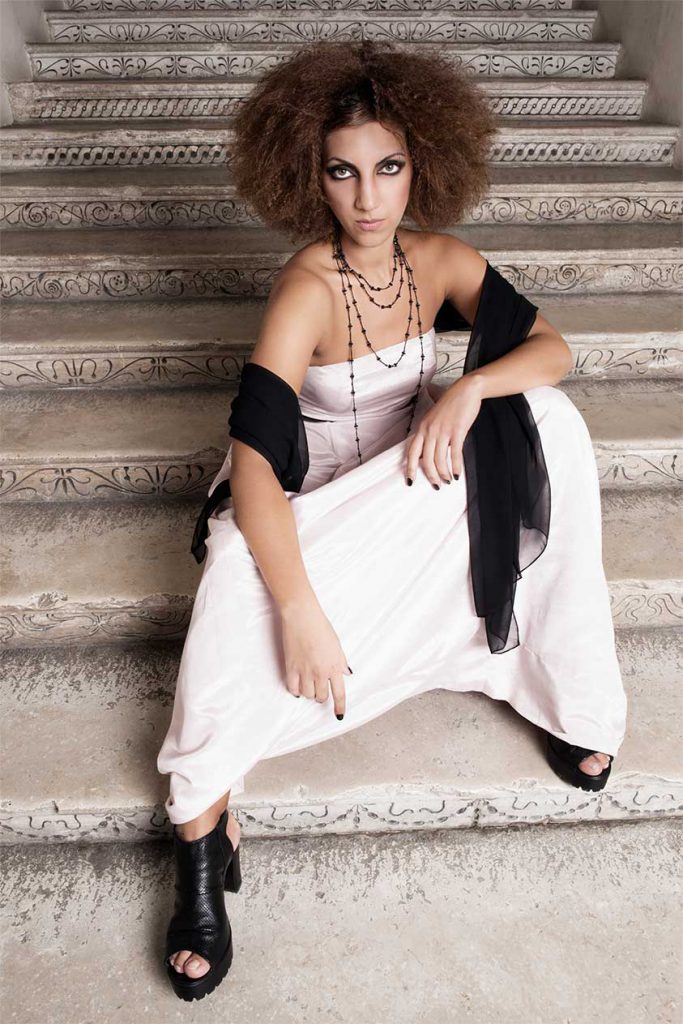professional course for
Professional Designer
Our Fashion School transform the students in real artists, providing all the necessary tools to combine their individual fantasy with the general needs of the labour market. Becoming a stylist consist in spreading your own ideas and apply them to fashion. It’s necessary a deep knowledge of the fabrics, coloring techniques, tailoring and stylizing an idea, with the awareness that you can achieve it. Therefore our Stylist course includes in its program the following subjects: Croquis, Pattern Making and Tailoring.
A stylist become the master of the whole productive cycle, starting from the idea, and then through the croquis creates the finished product. It’s important that the professional has the right characteristics. such as the skill of working in a group of people, intuition, creativity and precision. He must meet the deadlines of the sample case and consider the qualitative and price standards imposed by the fashion companies.The stylist is an artist and at the same time a fashion technician. Thanks to these characteristics he can work in different sectors and oversees the various processes in the fashion industry.The course aims to prepare the student for the labour market, providing him a series of activities that are directly connected with the fashion companies.Thanks to Kaledo Style you can define new fashion trends, the colors and the fabrics of a fashion line or a specific season, draw items of clothing, associate various fabrics, create fashion collection, create Mood, technical files and much more.

DURATION
2 years (19 months)
TOTAL HOURS
1260 hours – 360 lessons
WEEKLY HOURS
17 ore settimanali in 5 lezioni
SIGNING UP
€ 900,00
MONTHLY PAYMENT
€ 400,00
COURSE PROGRAM
The program of the professional stylist course is the largest in our school and consists of other sub-programs.
Click on the buttons below to see in detail what each sub-program is made up of!
- Basic skirt plus all basic models of skirts.
- Basic and classic trousers + patterns
- Basic shirt for women and men.
- Various model shirt models with variants of collars, sleeves and cuffs.
- Classic dress with trims.
- Various basic dresses with patterns, patterns and raglan models.
- Classic jacket with man’s sleeves.
- Various jackets for figures with always different patterns.
- Jacket and classic coat.
- Various models for practice figures.
- Models and packaging of wedding dresses.
- Explanation and packaging of always different models of collars, sleeves, pockets and trims.
- Explanation of using sewing machines + practical.
- Explanation of the types of fabric and cutting system.
- Explanation and practice of packaging, including corrections.
- Various models based on newborn and child .
- Basic men’s models including underwear, outerwear, knitwear.
- abit pack i for men.
- Underwear models, from briefs to bra to swimsuit.
- Exercise and development of models derived from sketches or newspapers.
- Completion of all types of patterns.
- Explanation and use of sewing machines.
- Explanation of fabric placing and cutting.
- Study of accessories and equipment for the modeling.
- Study of the industrial work system.
- Study of hints of commodity.
- Study of size chart.
- Study and compilation of the technical sheet.
- Size development study.
- Size development practice on all basic models.
- Practice and work possibilities.
- Human proportion and anatomy.
- Drawing techniques.
- Figure basics.
- Study of measurements and proportions.
- Technique of colors.
- Notes on commodities.
- Study of the history of costume.
- Coloring. < / li>
- Search for target and materials.
- Stylization.
- Modeling studio.
- Decoration.
- Illustration .
- Design of fabrics.
- Collections.
- Study of the production cycle.
- Research method.
- Flat model.
- Technical data sheet.
- Realization of fashion collections of basic-ready-to-wear, pret-a-porter and high fashion garments .
- Study of women’s-men’s-children’s fashion collections.
- Study of accessories collections.
- Realization of the final book complete with research and materials.
< li> Study of drapery.
< li> Fashion accessories.
< / ul>
- Cad-cam graphic program.
- Model digitization.
- Model changes.
- Model coding.
- Table sizes.
- Stitch explanation.
- Model knowledge on screen.
- Model registration.
- Exercise.
- Data storage.
- Variants creation.
- Accessories creation.
- Screen model creation.
- Size development.
- Creating notches and holes on screen.
- Model and size changes.
- Blending various pieces of models.
- Check developments and values.
- Creation of marker card.
- Correct marker technique.
- Use and functions of the marker program.
- Print program.
- Optimization of consumption.
- Exercise.
< li> Adding seams.
- Cad-cam graphic program.
- Study of all functions.
- Figure insertion.
- Model coding.
- Explanation of stitches.
- Cognition appear on the screen.
- Model registration.
- Exercise.
- Data storage.
- Creating variants.
- Creating accessories on screen.
- Processing creations.
- Adding seams and topstitching.
- Coloring.
- Fabric creation.
- Color tables application.
- Card creation.
- Creation of fashion projects according to target.
- Use and functions of all applications.
- Final project.
< li> Drawing on the screen.
- Basic computer science.
- Fashion styles.
- Introducing Photoshop.
- Photoshop components.
- Sections and transformations.
- Vector graphics.
- Filters.
- Brushes.
- Color.
- Print.
- Levels.
- Word processing.
- Image changes.
- Exercise and collection creation.
- Fabric search .
- Realization of a project using the techniques learned.
DETAILS AND
MATERIAL
- Block notes.
- Pen.
- 2B Pencil.
- Rubber.
- Invisible adhesive tape.
- Paper scissors.
- Sewing scissors.
- Designer papers sheets.
- Set square with 90 degrees angles.
- 60 cm ruler.
- Tape measure.
- Thimble.
- Tailor’s chalk.
- Pins.
- Basting thread.
- Needles of various measures.
- The material for samples development will be described during the course.
- Flash drive.
- 2B-4B-6B Pencil.
- Stumps, 2 measures.
- Notepad.
- A4 paper sheets of 80/100 gr.
- Pencil eraser.
- Putty rubber.
- Little set square.
- Little ruler.
- Drawings portfolio.
- Watercolor pencils.
- Pantones.
- The necessery material for the researches and book will be indicated during the course.


Utilizza il form qui vicino per chiedere maggiori informazioni riguardo i nostri corsi o chiama i seguenti numeri:
Sede Ferrara
Tel.: +39 0532 1730817 – Cell.: +39 340 2633150
Sede Rovigo
Tel.: +39 0425 590305 – Cell.: +39 340 2633150












